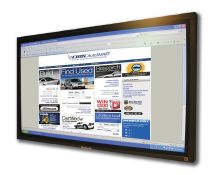
GA: Would it be accurate to say that credit unions view today’s crisis as an opportunity to gain market share?
TB: I think so. Looking at the numbers, credit unions represented 14.7 percent of all auto loans in the first quarter. By October we were at 21.6 percent. A six-point market increase over seven to eight months is significant.
The increase in market share has not come without challenges, however. As a California-based company, we’re seeing first hand the effects of the economic crisis. But we’re starting see some positive steps taken by credit unions in the state. Nevada and Arizona are also very challenging states. Where we’ve picked up momentum is in Texas and the Northwest. We’ve also signed some big credit unions in the Northeast.
GA: How can they be so active?
TB: Credit unions are definitely performing much better than other financial institutions right now, but there are some credit unions that are doing extremely well and some that are more challenged. It’s partially due to the geographic regions they’re in, especially if they are in an area hit hard by the subprime mortgage debacle.
Remember, credit unions haven’t typically been active in subprime lending or leasing, which is why they remain active today. Some credit unions did have members who took out subprime loans with other institutions. When those customers default on those loans, many times they default on their credit union loans too.
GA: Will liquidity be a problem for credit unions going forward?
TB: Well, four out of our top five lenders are 100 percent lent out. They’re borrowing money to lend, so I think there’s definitely a challenge with how much more volume they can pick up. However, the industry as a whole has approximately $100 billion in liquidity.
[PAGEBREAK]
GA: Can you tell me about this segment’s current buying criteria?
TB: I think you’ll see that credit unions are buying slightly deeper in 2008, especially if the customer is a member. I don’t think you’ll find any other financial institutions doing that today. But again, credit unions were never full-spectrum buyers. They have always been more prime to nonprime lenders. As for terms, credit unions in general did finance more 72-month loans than the average financial institution.
GA: What about dealer reserve and back-end product advances?
TB: Most credit unions do have policies for advances on aftermarket products on the CUDL system, whether it’s a stated product amount or just a general percentage of the deal. In fact, many credit unions are still in the 110 percent to 125 percent range.
As for reserve, most CUDL credit unions pay 1 percent of the loan amount, but they can set up special plans with their dealers, and about a third of them do that.
GA: What exactly has CUDL attempted to do in this industry?
TB: If you think about the credit union brand, it really is an auto loan. What we saw was an opportunity to make things more convenient for credit union members by allowing them to get financing at the point of sale, and that’s what we’ve done with the CUDL system.
Our software solutions, which sit at the dealership like other provider networks, now connects approximately 9,700 dealers with a lending network that has approximately 700 credit unions. Credit unions can also input their lending criteria into our decision engine, so dealers can get instant approvals. Our software also funds the loans right into the dealer’s bank account.
We also have our AutoSMART research and shopping Website, which gives dealers another marketing and advertising resource. The site has almost 500,000 cars, which are marketed to customers by 95 percent of our credit unions. We’re also implementing a call center that will help members connect with a dealer and get their financing completed before they enter the dealership.


0 Comments
See all comments